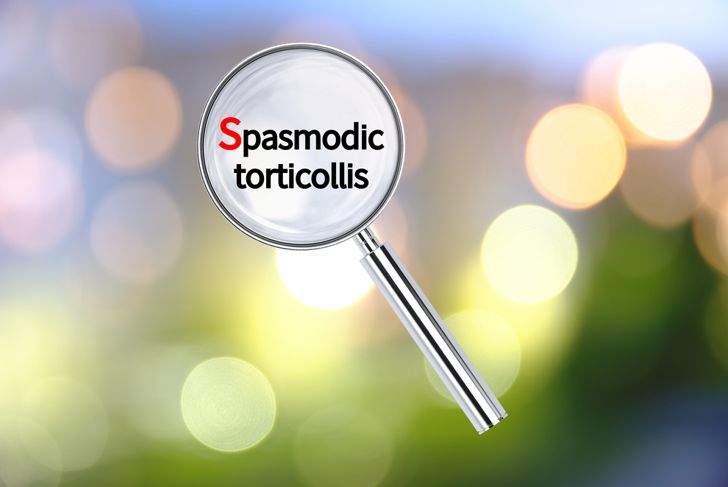Torticollis is the medical term for a twisted neck. It can be quite painful, but this minor injury normally heals within a few days without the need for any medical intervention. A painkiller is usually the only medicine anyone requires. Only if the condition continues much longer than usual is it advisable to get a doctor’s diagnosis. You recognize the condition instantly in most cases, and if you do go to the doctor, an examination of your neck tells the doctor all they need to know.
What are the most common symptoms?
It is common to discover you have this neck pain as an unpleasant shock when you wake up one morning. The pain affects one side of the neck, and a stiffness of the muscles makes movements difficult. An attempt to straighten the neck is very painful, and it might not be possible to move the neck to one side. This neck pain sometimes occurs in the center of the neck, and it might radiate out from the neck to affect the back of the head and shoulders.
What causes this condition?
It may be surprising to discover that scientists remain mystified about what exactly causes this condition to develop. Someone could go to bed while feeling perfectly fine and wake up in the morning with acute torticollis. It seems like a minor strain in a muscle might be the trigger. This could occur if you lie or sit in a position lacking good neck support, or after sitting facing a computer terminal over a long period. Sleeping with your neck exposed to cold air, or carrying a heavy item in one hand and a lighter item in the other could also pave the way to this neck problem.
Could this be a case of Cervical Dystonia?
Although the vast majority of torticollis cases rank as minor irritations, the condition occasionally assumes a more severe form. Cervical dystonia affects those over the age of 40. Its English name, spasmodic torticollis, describes how it manifests itself in abnormal neck muscle movements. The sufferer loses control over these muscles so their neck and head may twist around or go backward, forward and sideways. This illness strikes with various degrees of severity. No cure is available, but regular botulinum toxin injections help.
Which other health conditions could cause torticollis
It is also possible that torticollis develops as the symptom of another health condition even though this is a rare occurrence. Sometimes a throat infection swells the lymph glands in the neck, and consequently, neck pains begin. A neck injury also sometimes leads to torticollis, and this could even be a side effect of certain medications. Doctors may start investigating such non-standard causes if the condition does not quickly go away.
Which painkillers are most effective?
Someone who suffers from torticollis might want to take painkillers to help cope with pains and neck stiffness. Most adults find that 1,000 mg of paracetamol (two tablets) four times a day is all they need, but others prefer to take anti-inflammatory painkillers. It is easy to find these kinds of medications on sale over the counter at pharmacies, so there is no need to make a doctor’s appointment. Now and again, you might want an even stronger painkiller such as codeine, but remember that this often causes constipation.
How can exercise help?
Certain exercises help to return normal neck nobility. Perhaps the pain will be too intense the first day but after that make an effort to move your neck normally. The stiffer the neck becomes, the worse the condition becomes so do what you can to move it around. Start with gentle movements and gradually increase the range while moving the neck in different directions. It is better not to drive the car until regular free neck movement returns.
What steps to take to avoid this neck problem?
It is impossible to guarantee full protection from torticollis, but risk-reducing measures improve the chances of avoiding it. One of the most basic of all these safeguards requires you to pay attention to posture while typing or viewing information online. Try to keep your back straight and sit upright at all times. At night, make sure to use a comfortable pillow that gives full support to the neck. Some people also recommend using heat packs to relax neck muscles.
What types of additional treatments bring relief?
In addition to neck exercises and over the counter medications, sometimes other kinds of treatments might prove advisable. Various massage techniques help relieve torticollis symptoms, and these could fit in well with physical therapy sessions. If they have torticollis in a particularly severe form, the doctor could recommend that the patient wear a neck brace for a certain period. In even more extreme cases, they might advise cutting muscles or some other surgical procedure.
Can this condition have any long-term health consequences?
Common minor incidents of torticollis have no lasting effects on health, but its chronic form does do damage. The patient might need to contend with severe pain over a prolonged period. Perhaps they will no longer be able to drive or do other activities they performed so easily before this illness. A sense of social isolation may develop in this situation, and signs of depression often accompany it.
What treatment helps babies in this condition?
Sometimes the doctor recommends that the mother should stretch the sternocleidomastoid muscle in the baby’s neck. They send the mother to a physical therapist who teaches her how to perform safely this, and any other recommend stretch exercises. For example, it might help to turn the baby’s neck gently towards the side that is stiff with torticollis. It also often helps to change the baby’s position during nursing to allow him or her to stretch their neck naturally.

 Home
Home Health
Health Diet & Nutrition
Diet & Nutrition Living Well
Living Well More
More




















